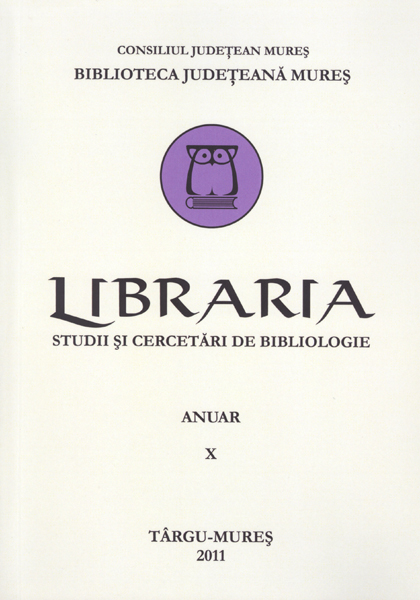Consideraţii cu privire la importanţa Psaltirii de la Bălgrad din 1651
Considerations About the Importance of the Psalter of Bălgrad from 1651
Author(s): Policarp ChițulescuSubject(s): Museology & Heritage Studies, Library and Information Science, History of Religion
Published by: Biblioteca Județeană Mureș
Keywords: Psalter; Simion Ştefan; Orthodoxy; Bălgrad; Transylvania;
Summary/Abstract: Transylvania had often been reclaimed by the empires that surrounded it, so Romanians living there were permanently exposed to the danger of losing their national and spiritual identity, along with their Orthodoxy. Printing books in this part of Romania was a difficult task, because the prince and the nobles, who were neither Romanian nor Orthodox, imposed a severe censorship. In the 17th century, the Calvinistic offensive on Romanians intensified, in order to isolate them from the faith of their brothers in Moldova and Wallachia. Realising that Orthodox religion meant for the Romanians in Transylvania both culture and the worship of God, the Metropolitan Simion Ştefan from Alba Iulia printed in Romanian in 1648 The New Testament and The Psalter, in 1651, with the help of a group of Romanian scholars. These books generated a strong echo in culture and spirituality, a fact which is obvious by the ample circulation of these books in all the Romanian provinces by numbers that amounted to thousands. The Psalter printed in Alba Iulia (Bălgrad) in 1651 was less studied, because it was put into shade by the authority and dignity of The New Testament from 1648. The second foreword of The Psalter (which has 3 forewords) is a true abridged Orthodox theology treatise. Under the pretext of highlighting the importance of the Psalms, Calvinism was being fought against, as it was the religion of the political authority in those times. We can infer from this foreword that it was elaborated for the purpose of strengthening the awareness of the Romanians in Transylvania as belonging to the Byzantine Orthodox religion, which was a living presence in the lives of their Romanian brothers across the mountains, and that means that a strong nationalistic spirit was present here. A foreword like this, written in the Romanian language, could only be elaborated by a Romanian (perhaps by the courageous Metropolitan Simion Ştefan); there is an abundance of quotes from famous Byzantine authors (mainly), which proves a good knowledge of classical languages and also an original approach to these authors.
Journal: Libraria. Studii și cercetări de bibliologie
- Issue Year: X/2011
- Issue No: 10
- Page Range: 111-119
- Page Count: 9
- Language: Romanian

